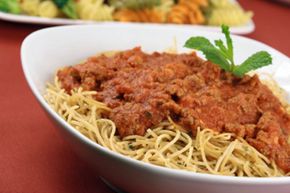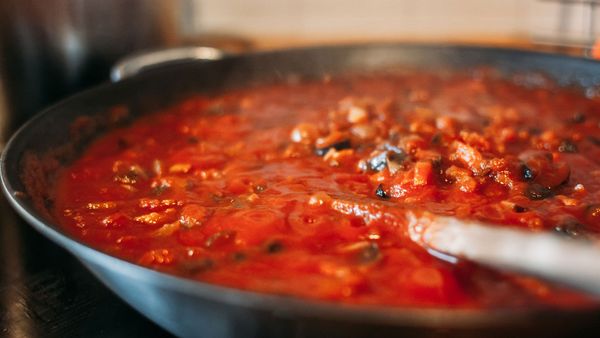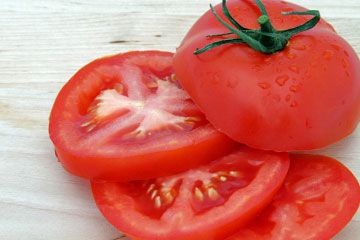There are so many tomato-based products on the market that it can be hard to find cupboard space for all of them. Chances are that at one time or another you'll be holding a can of stewed tomatoes in your hand while the recipe you're trying to make calls for whole tomatoes. Or, you'll need tomato sauce, but all you have available is a small can of tomato paste. Luckily, tomatoes are flexible fruits (yes, they're actually a fruit), and you can often perform a little kitchen wizardry to modify one type of tomato product to do double duty in a pinch.
When making tomato sauce from tomato paste, there's some good news and some bad news. Because tomato paste is a concentrated form of tomato puree, you can dilute it to the consistency of tomato sauce without much fuss. Adding one cup of water to three-quarters of a cup of tomato paste will result in a tomato base with the same texture and thickness as tomato sauce (after some brisk stirring). It won't taste exactly like tomato sauce, though.
Advertisement
Tomato sauce is a seasoned product. The flavor may vary a little from brand to brand, but most varieties will taste sweeter, saltier and more savory than plain, diluted tomato paste. Although you can use it without additional seasonings, you may be disappointed with the results unless the dish you're making has lots of other highly seasoned ingredients to help camouflage your sauce's lack of zest.
To make your paste and water mixture taste more like full-bodied tomato sauce, add a little sugar to combat the acidic bite, and include a few of your favorite spices like salt, pepper, garlic powder or onion powder. This is a season-to-taste proposition you'll have to experiment with a little. Try a pinch at first and then perform a taste test. Keep adding and adjusting from there.
Another option is to add some heavy duty flavor enhancers. Depending on the recipe, adding a couple of ingredients from the list below could help you better approximate the flavor of a quality tomato sauce product and even contribute some unexpected gusto and zip. Just be sure to incorporate flavoring ingredients in moderation. A drop or sprinkle is enough to start. Once you strike a good balance among sweet, salty and spicy flavors, your taste buds will know it.
- paprika
- red wine
- oregano
- marjoram
- olive oil (just a dash)
- sea salt
- cream sherry
- balsamic vinegar
- thyme
- pureed carrot
If you're using the sauce in a spaghetti or chili dish, you may not need to refine it much to make it work in your recipe. As a general rule, the more ingredients in a dish, the less it will rely on any single component to create good flavor. Adding at least a little sugar and salt to makeshift tomato sauce made from tomato paste is always a good idea, though.
While you're tweaking your sauce, make sure to keep it thick enough. Tomato sauce should coat a wooden spoon, and if you've added a bit too much vinegar or wine while spicing it to taste, you might want to try cooking it at a light simmer with the lid off the pan for a few minutes to achieve a slightly thicker consistency. It shouldn't take long, so stay close by and check it often.
Advertisement



